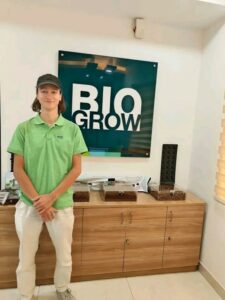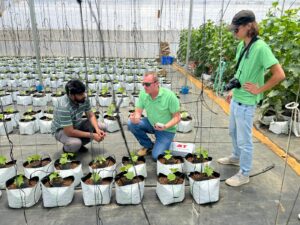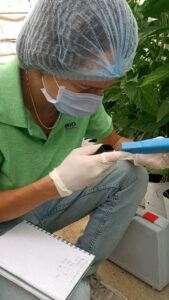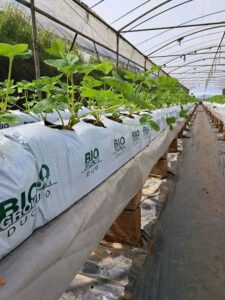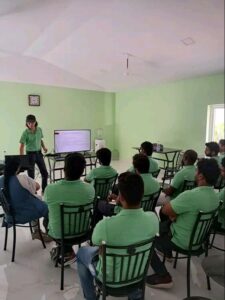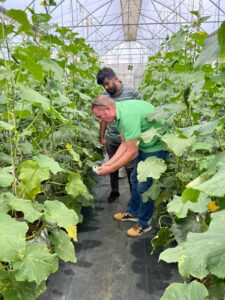We recently spoke to agronomist Thomas Cazin, who for the last couple of months has been visiting our production sites in India and in Sri Lanka. In addition to leading in-house training seminars, Thomas also visited some local growers who were lucky enough to benefit from his in-depth knowledge of soilless agriculture :
“Today marks exactly 2 and a half months since I embarked on the Biogrow journey, starting in India and finishing in Sri Lanka.
During the first two months in India, I had the chance to immerse myself in the local culture and visit the substrate factories. This allowed me to gain a deeper understanding of the processes, the quality controls, and their significance. I also had the opportunity to understand the challenges faced by Indian farmers through extensive field visits where we were able to give them culture-specific technical support. The majority of greenhouse crops were tomatoes, cucumbers, bell peppers, and strawberries. However, a common observation across most farms was the lack of understanding regarding the use of soilless substrates.
Given India’s water issues, high fertilizer costs, and a highly fluctuating market, farmers often attempt to irrigate similarly to traditional open-field methods, disregarding drainage as being unnecessary. Yet, it’s impossible to manage the fertilization and irrigation of coconut coir substrates in the same way as in open fields. Key to soilless substrates is proper drainage. Achieving a specific daily drainage percentage initially ensures meeting the plant’s water and nutrient requirements, while also preventing toxic salt concentrations in the substrate that reduce growth. I noticed that many farmers were under-irrigating, leading to water and salt stress. On the other hand, some farmers were irrigating sufficiently but using competing open-top bags without drainage holes. This resulted in root anoxia, leading to plant mortality.
The best root results were observed in Biogrow bags. However, significant efforts are needed to train farmers on soilless irrigation and fertilization techniques. I witnessed various set-ups, and while the tools for effective agriculture are generally available, India currently lacks the knowledge for optimal soilless cultivation. With Biogrow bags, along with Biogrow’s expertise and technical guidance, India can undoubtedly acquire the knowledge to establish cutting-edge agriculture in order to manage the mounting demographic pressures in a sustainable manner.
After spending two months in India, I traveled to Sri Lanka to visit Biogrow’s factories in this neighbouring country. I witnessed the new solar installation on the roof of one of the facilities and participated in the inauguration of the new staff-exclusive gym. Additionally, I conducted various farm visits as part of a technical advisory role. The areas for improvement remain consistent: enhanced management of irrigation, fertilization, and pest control.
I also had the opportunity, both in India and Sri Lanka, to create a training program for Biogrow’s customers. This program aims to give them thorough technical guidance on soilless cultivation. Subsequently, I conducted training sessions for the factory teams on how farmers use the bags effectively.
To wrap up this experience, I want to say a big thank you to Biogrow and all the team for giving me this chance, and also to the farmers who welcomed me and trusted me with my farming advice.”

